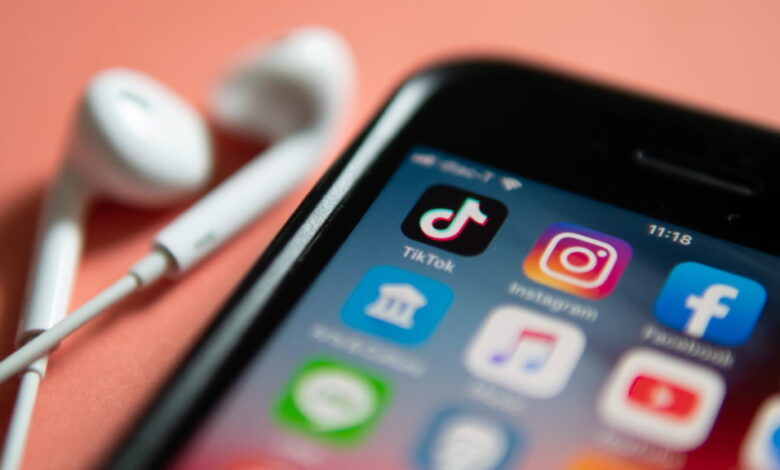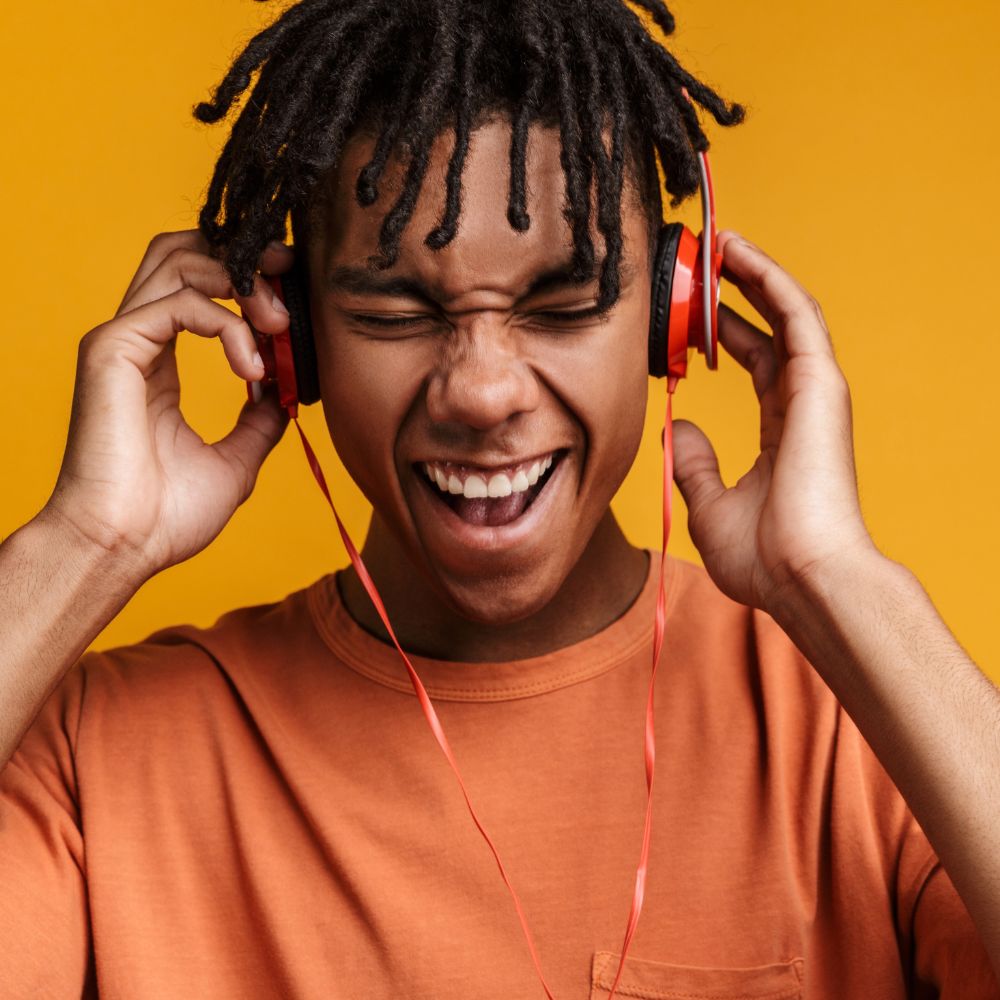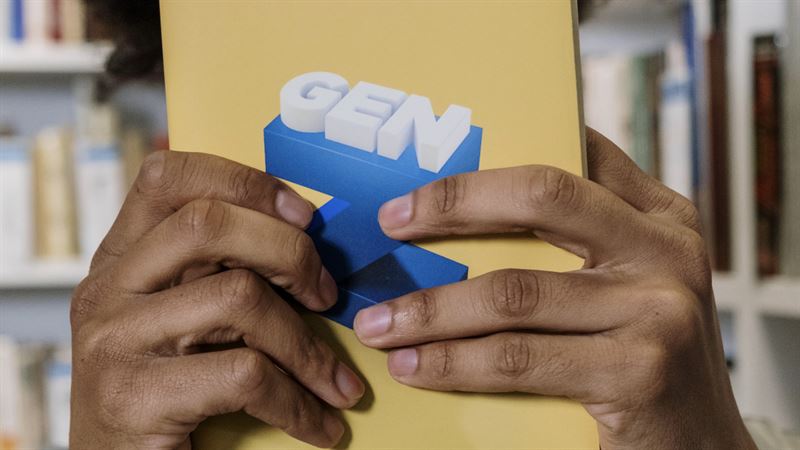
TikTok Is Changing How Gen Z Speaks
TikTok is changing how Gen Z speaks. It’s not just about viral dances and catchy tunes; the platform is fundamentally altering the way a generation communicates, injecting a unique slang, shortening phrases, and even influencing how we write. From newly coined words to the rapid-fire exchange of emojis, TikTok’s impact on language is undeniable, and its effects ripple far beyond the app itself.
This shift isn’t just about adding a few quirky words to our vocabulary. The short-form video format demands concise communication, leading to a condensed linguistic style. Influencers and trends shape the evolution of language, with certain phrases gaining popularity through community adoption and spreading to other platforms. This begs the question: is this evolution of language a positive change or a concerning trend impacting formal communication?
TikTok’s Influence on Gen Z Lexicon

TikTok, with its short-form video format and emphasis on trends, has profoundly impacted the language used by Gen Z. The platform acts as a powerful incubator for new slang, phrases, and even altered pronunciations, rapidly disseminating them across a massive global audience. This influence extends beyond fleeting internet trends, shaping everyday conversations and impacting how this generation communicates.
TikTok’s influence on Gen Z slang is undeniable; new words and phrases pop up daily, shaping communication in fascinating ways. It’s a bit like the collective, almost mythical experience described in the miracle of kings cross , where shared narratives and beliefs create a powerful social phenomenon. Just as that event forged a unique collective memory, TikTok is forging a unique linguistic landscape for a generation, influencing not just how they speak, but how they think and connect.
The rapid spread of trends on TikTok creates a unique environment for linguistic evolution. A phrase or word can go from relative obscurity to widespread use within days, driven by the platform’s algorithm and the collective participation of millions of users. This rapid dissemination surpasses the influence of traditional media and even other social platforms, making TikTok a key driver of linguistic change among Gen Z.
Examples of TikTok Slang and Their Meanings
TikTok has popularized numerous slang terms, many originating within specific communities or niche interests before achieving mainstream adoption. Understanding these terms requires considering their context within the platform’s culture. The use of these terms often involves visual cues and accompanying actions within the videos themselves, adding another layer of meaning beyond the words themselves.
TikTok’s influence on Gen Z slang is undeniable; new words and phrases pop up daily, shaping their communication. It’s fascinating to see how this contrasts with the more traditional political discourse, like Tulsi Gabbard’s recent endorsement of Republican Adam Laxalt for Senate, as reported here: midterm elections updates tulsi gabbard endorses republican adam laxalt for senate.
I wonder if even political campaigns will start using TikTok slang to connect with younger voters – it’s definitely a force to be reckoned with.
For example, “slay” initially meant to perform exceptionally well, but on TikTok, it’s expanded to encompass anything considered stylish, impressive, or generally amazing. Similarly, “vibe check” transitioned from a general assessment of someone’s emotional state to a playful challenge or assessment of someone’s overall aesthetic or personality. “Cheugy,” originally used to describe something outdated or uncool, is now often used ironically or self-deprecatingly, highlighting the complex and often evolving nature of TikTok slang.
TikTok’s influence on Gen Z slang is undeniable; new words and phrases pop up daily. It’s fascinating how this rapid linguistic evolution intersects with other major events, like the COVID-19 pandemic. For example, the intense online discussions surrounding the vaccines led to a whole new vocabulary, and I found some interesting information about this in an article, a look inside the covid vaccines and the blood of the vaccinated , which further highlights how real-world events shape online conversations and ultimately influence Gen Z’s unique lexicon.
It’s amazing how quickly these things intertwine and shape language.
Evolution of Common Slang Terms on TikTok
The following table illustrates how some common slang terms have evolved from their original meanings to their current usage on TikTok:
| Term | Origin | TikTok Usage | Evolution |
|---|---|---|---|
| Sus | Short for “suspicious” | Used to describe something or someone that seems shady or untrustworthy. Often accompanied by dramatic music or visuals. | From a general adjective to a highly versatile and visually-driven descriptor of deception or questionable behavior. |
| Bet | Informal agreement | Expresses excitement, agreement, or confidence; often used as a standalone response. | From a simple affirmation to an enthusiastic and versatile interjection conveying a range of positive emotions. |
| Cap | Short for “lying” | Used to call someone out for lying or exaggerating. | From a simple accusation of dishonesty to a widely recognized and easily understood slang term used in playful banter. |
| Slay | To perform exceptionally well | Used to describe something stylish, impressive, or generally amazing. | From a performance-based term to a general expression of admiration and approval. |
Short-Form Video & Linguistic Condensation
TikTok’s short-form video format fundamentally alters how language is used and perceived. The platform’s emphasis on brevity necessitates a shift towards concise, impactful communication, forcing users to distill complex thoughts into easily digestible snippets. This has led to a unique linguistic landscape, characterized by a blend of visual and textual communication strategies.The inherent time constraints of TikTok videos demand a linguistic economy.
Users have mere seconds to capture attention and convey their message. This has resulted in a preference for short, punchy phrases, often relying heavily on visual cues and readily understood symbols to maximize impact within the limited timeframe. The platform actively rewards creativity and speed in communication, influencing the very structure and style of language used.
Abbreviations, Acronyms, and Emojis in TikTok Communication
The need for brevity on TikTok has fueled the widespread adoption of abbreviations, acronyms, and emojis. These tools allow users to convey complex ideas or nuanced emotions efficiently. For example, “IYKYK” (if you know, you know) efficiently communicates inside jokes or shared experiences, while a simple “😂” can convey amusement more quickly than a lengthy written description. The use of these linguistic shortcuts is not merely a stylistic choice; it’s a functional adaptation to the platform’s format.
Consider the common use of acronyms like “POV” (point of view) or “FYP” (for you page) which have become integral parts of TikTok’s vernacular, immediately understood by its user base. The integration of these elements demonstrates a sophisticated understanding of the platform’s communication dynamics. This demonstrates a unique linguistic evolution driven by the platform’s constraints.
Comparison of TikTok’s Linguistic Style to Other Social Media Platforms
TikTok’s linguistic style differs significantly from other social media platforms. While platforms like Twitter also prioritize brevity, TikTok’s reliance on visual elements and rapid-fire editing creates a distinct communication style. Unlike Twitter’s focus on text-based commentary and debate, TikTok favors a more immediate, emotionally driven approach. Instagram, with its focus on curated imagery and longer-form captions, also contrasts with TikTok’s emphasis on short, impactful bursts of information.
Facebook, with its emphasis on longer-form updates and group discussions, stands in stark contrast to the fast-paced, highly visual communication favored on TikTok. The difference isn’t just in length, but in the overall tone and style of communication; TikTok prioritizes immediate engagement and emotional connection through concise, impactful statements and visuals, while other platforms allow for more nuanced, extended conversations.
The Role of Sounds and Visuals in Shaping Language: Tiktok Is Changing How Gen Z Speaks

TikTok’s impact on language extends beyond the words themselves; the platform’s unique blend of audio and visual elements fundamentally shapes how Gen Z understands and uses language. The viral nature of audio clips and accompanying visuals creates a powerful synergy, influencing the meaning and usage of words and phrases in ways unseen in previous generations’ communication mediums. This interplay of sound and image creates a context that transcends the literal meaning of the words spoken, often leading to entirely new interpretations and applications.The symbiotic relationship between audio and visuals on TikTok fundamentally alters linguistic interpretation.
A phrase’s meaning can be dramatically shifted depending on the accompanying visuals and the overall context of the video. The platform’s short-form nature necessitates efficient communication, forcing users to rely heavily on visual cues to convey meaning quickly and effectively. This visual emphasis leads to a condensed and often highly nuanced form of expression, where subtle gestures, expressions, and background elements all contribute to the overall message.
This process contributes to the evolution of language, particularly within Gen Z’s online lexicon.
Examples of Audio-Visual Influence on TikTok Language
The following table illustrates how the combination of audio and visual elements on TikTok contributes to the nuanced meaning of specific phrases. The power of this combination lies in its ability to generate multiple layers of meaning, often going beyond the literal interpretation of the words spoken. The platform’s short-form nature demands efficiency, leading to a reliance on visual cues to quickly convey complex emotions or ideas.
| TikTok Video | Audio Clip | Visual Elements | Impact on Language |
|---|---|---|---|
| A video showcasing someone failing at a task, often comedically. | A popular comedic sound effect or a song with a humorous tone. | Slow-motion shots of the failure, exaggerated facial expressions, and potentially comedic editing. | The phrase “epic fail” takes on a playful, almost celebratory meaning, distinct from its traditional negative connotation. The visual elements transform the failure into a humorous spectacle, making the phrase synonymous with lighthearted misfortune. |
| A video featuring a person expressing excitement or enthusiasm. | An upbeat and energetic song or a sound effect conveying excitement. | Rapid cuts, bright colors, energetic movements, and close-up shots of the person’s excited facial expressions. | The phrase “living my best life” is amplified beyond its typical meaning. The visual elements reinforce the feeling of joy and exuberance, leading to a more intense and visually driven expression of happiness. |
| A video showing a person reacting to something surprising or shocking. | A dramatic sound effect or a piece of music with a suspenseful build-up. | Wide-eyed expressions, slow-motion reaction shots, and potentially dramatic lighting or editing effects. | The phrase “I can’t even” transcends its simple meaning of disbelief. The visual elements amplify the shock and overwhelm, turning the phrase into a powerful expression of incredulity and emotional overload. The visuals are key in establishing the context and intensity of the emotion. |
Community & Influencer Impact on Linguistic Norms
![]()
TikTok’s unique ecosystem, built on short-form video and viral trends, profoundly impacts the language used by Gen Z. Influencers, acting as linguistic trendsetters, shape the lexicon and usage patterns within their communities, leading to the rapid spread of slang, catchphrases, and even new grammatical structures. This influence isn’t solely top-down; community interaction and feedback also play a vital role in shaping the evolution of these linguistic norms.The power of TikTok influencers lies in their ability to organically integrate new language into their content.
A single phrase used repeatedly in a viral video can quickly spread across the platform, adopted by followers who emulate the influencer’s style and seek to participate in the community’s shared linguistic space. This process is accelerated by the algorithm, which prioritizes trending sounds and phrases, ensuring widespread exposure for newly coined terms.
Linguistic Styles Across Different TikTok Communities
Different TikTok communities cultivate distinct linguistic styles reflecting their specific interests and cultural contexts. For instance, the gaming community often employs jargon specific to certain games, incorporating abbreviations, acronyms, and in-jokes that outsiders may not understand. Beauty influencers, on the other hand, might use more descriptive and evocative language, focusing on textures, shades, and application techniques. Comedy communities, characterized by rapid-fire humor and wordplay, frequently employ slang, puns, and ironic understatement.
These differences illustrate how linguistic norms are shaped not only by individual influencers but also by the shared cultural understanding within each niche community.
A Hypothetical Example of Linguistic Innovation on TikTok, Tiktok is changing how gen z speaks
Imagine a popular gaming influencer consistently uses the phrase “meta-gaming” to describe a specific strategic maneuver in a popular game. Initially, this usage might be confined to their own community, appearing in comments and other videos. However, as the influencer’s videos gain traction, the phrase becomes increasingly prevalent. Other gaming influencers start adopting “meta-gaming,” using it in their own content, further solidifying its meaning within the gaming community.
Eventually, the phrase enters general TikTok usage, possibly expanding beyond the gaming sphere to describe strategic advantages in other contexts. This demonstrates how a new word or phrase, originating from a single influencer’s creative language use, can gain widespread popularity through community adoption and algorithmic amplification.
Ultimately, TikTok’s influence on Gen Z’s language is a fascinating case study in how technology shapes culture. While some might worry about the impact on formal communication, the platform’s influence on linguistic evolution is undeniable. The rapid spread of slang, the visual and auditory context shaping meaning, and the power of influencers all contribute to a dynamic and ever-changing linguistic landscape.
It’s a testament to the power of social media and its ability to shape not just our entertainment, but also the very way we communicate.

